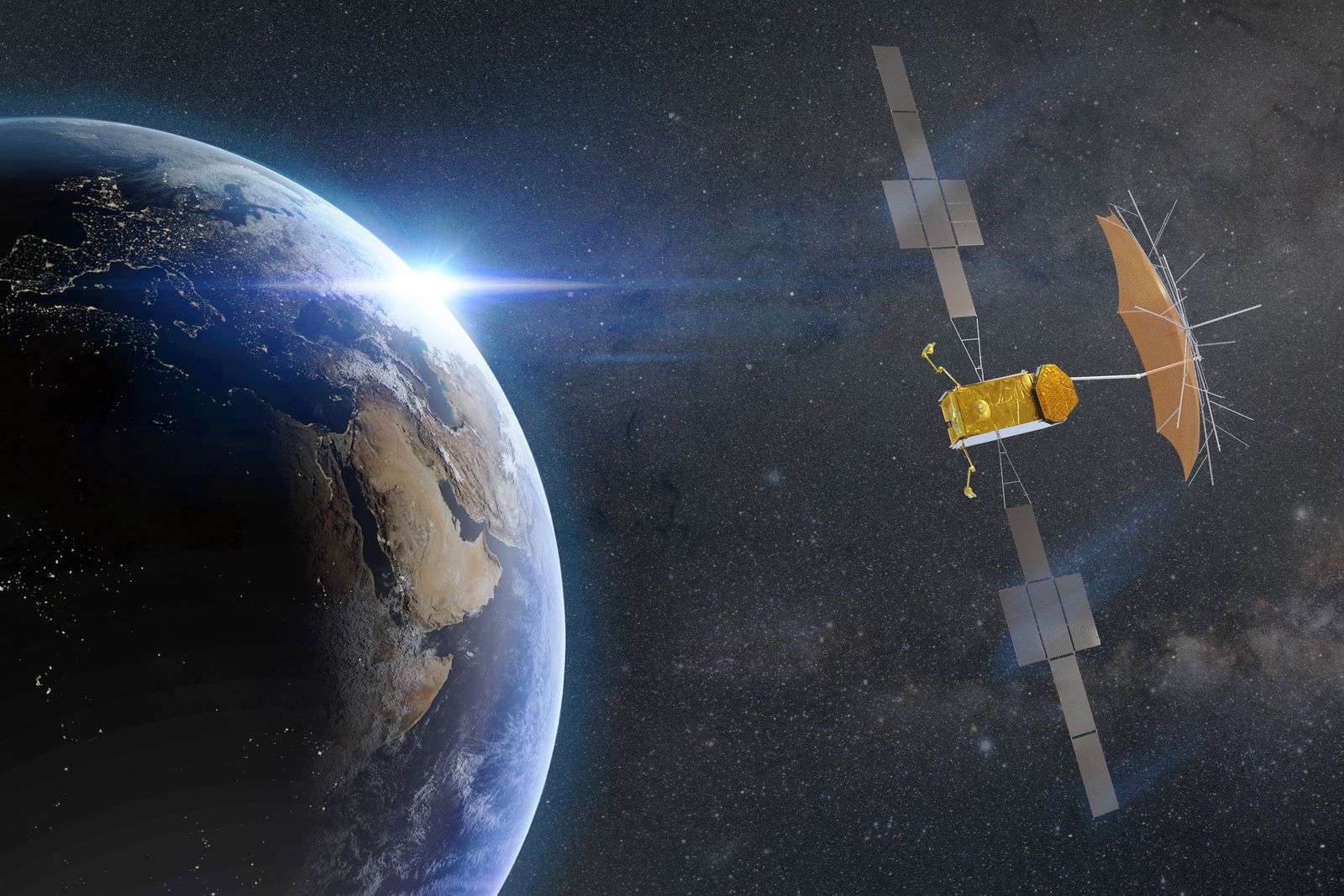OTTOBRUNN – It sounds like science fiction: Airbus and its partners want to produce electricity in space and send it wirelessly back to Earth. It is still expensive and ineffective. But this technology could be a mosaic piece for sustainable energy supplies of the future — and it is technically feasible.
Massive solar farms in geostationary orbit, 36,000 kilometers from the Earth’s surface, could help solve future Earth energy problems. Because the sun always shines in space, 24 hours a day, seven days a week. But how can renewable energy generated in this way be brought to Earth?
“Power Beaming” is the keyword and describes the wireless transmission of electrical energy through the air. European Space Agency ESA, Airbus and New Zealand startup Emrod presented how this works Tuesday at the Airbus X-Works innovation plant in Ottobrunn.
2.5 kilowatts of power from a solar panel in front of the hall was fed to the inverter and then transferred to microwaves. A transmitter, consisting of an 8 x 8 antenna array, sent a 5.8 GHz microwave beam, which corresponds to the frequency of a home WLAN, at a distance of 36 meters to a receiver.
The microwaves were then converted into electrical energy and used to light a model city and refrigerator and produce green hydrogen using a small electrolyzer.
Technically and economically feasible
The overall efficiency of such a system is still low. The parties involved didn’t want to say exactly how low it would go. According to Yoann Thueux, director of the research project at Airbus, power transmission itself is not the big problem, with losses occurring mainly in solar cells, but also in microwave generation and rectification.
radiate energy, © Airbus
ESA aims to ensure that 10 to 15 percent of the solar energy that strikes solar panels is fed into the grid.
Two independent studies commissioned by the European Space Agency, one by German management consultancy Roland Berger and the other by British engineering consultancy Frazer-Nash, have come to the conclusion that space solar is not only feasible in technical terms, but also in terms of energy costs. In the future it can be competitive.
However, there is still a lot of work to be done, for example, huge kilometer-long, but at the same time photovoltaic antennas must be developed, and the issue of safety must also be given sufficient consideration with high-energy microwave radiation.
According to Jean-Dominique Coste, Senior Manager Blue Sky at Airbus, people can be safely near a receiver on the ground if a relatively low power density of 10 W/m2 is chosen for the microwave beam.
However, the ground station must be correspondingly large. Coast spoke of a radius of about six kilometers.
billion investment
Huge investments are also necessary. Sanjay Vijendran, ESA’s Mars Exploration Strategy Team Leader, is proposing up to €15 billion in the next 10 to 15 years. The European Space Agency wants to develop the technology, which could be mature on a large scale around 2040, with the Solaris preparatory programme. It is due to be presented at the ESA Ministerial Conference in November, where the ESA’s budget for the next four years will be negotiated.
Space-powered solar energy is also important for powering future longer moon and Mars missions. Airbus has also presented electric aviation as another potential field of application: One day, microwave beams could also supply electric aircraft with electricity from the air. However, suitable coatings that serve as antennas on the fuselage have yet to be developed. But this is still science fiction.
© FLUG REVUE – Ulrich Ebner | Fig: Airbus | 03.10.2022 06:14

“Certified tv guru. Reader. Professional writer. Avid introvert. Extreme pop culture buff.”







More Stories
Samsung Quantum Dot TV: Art meets technology
Pitch: €56m for energy startup Reverion
Plastoplan: Plastics for Energy Transition